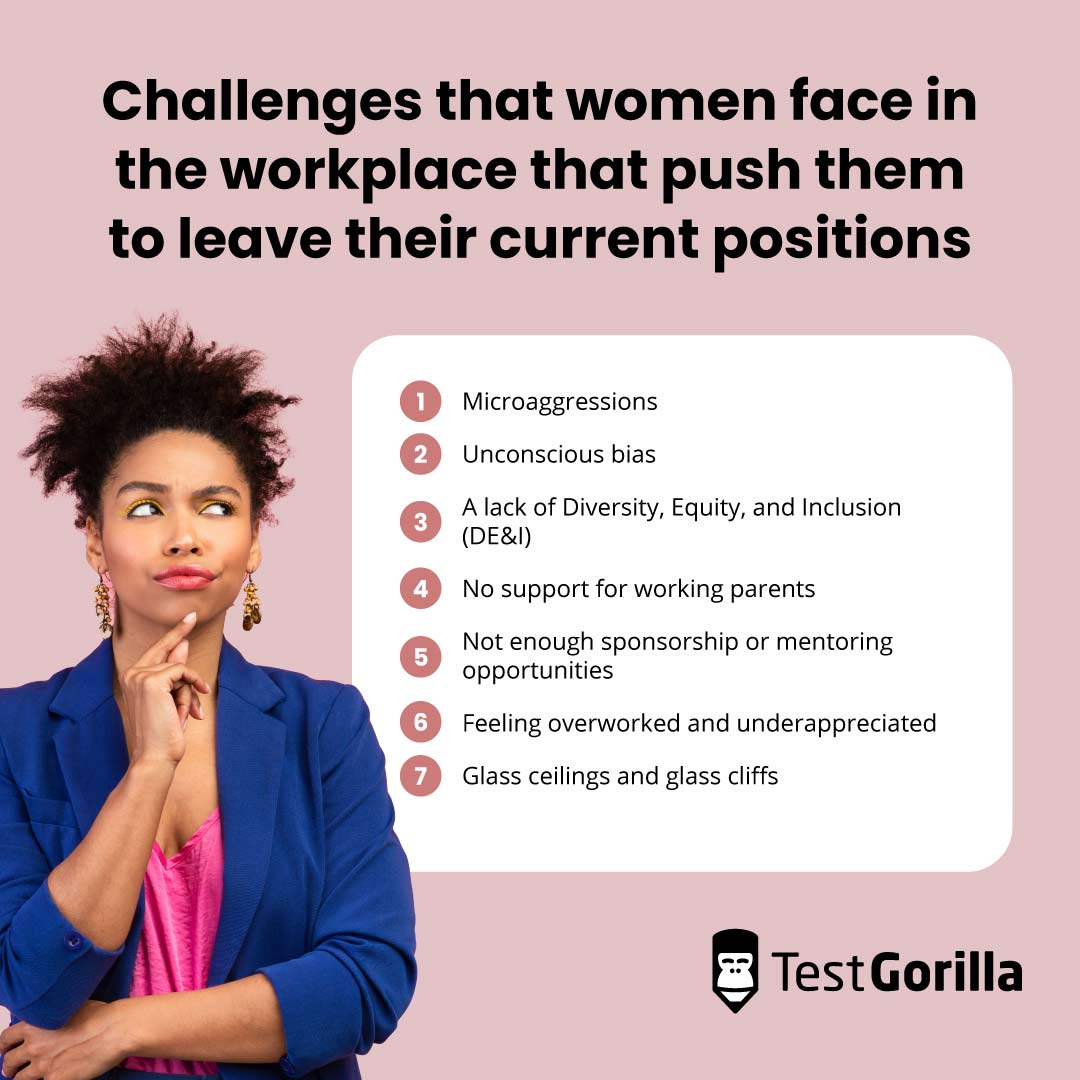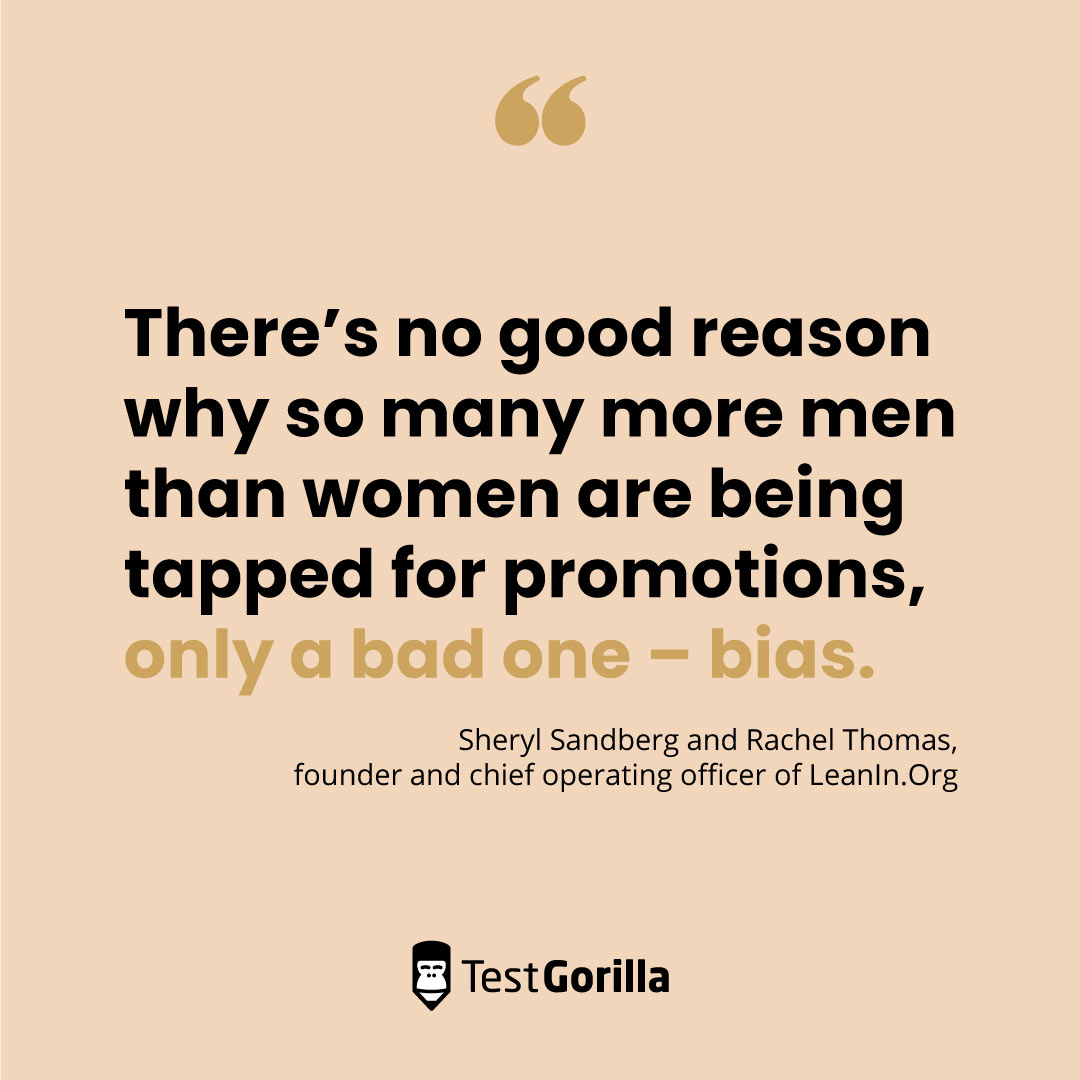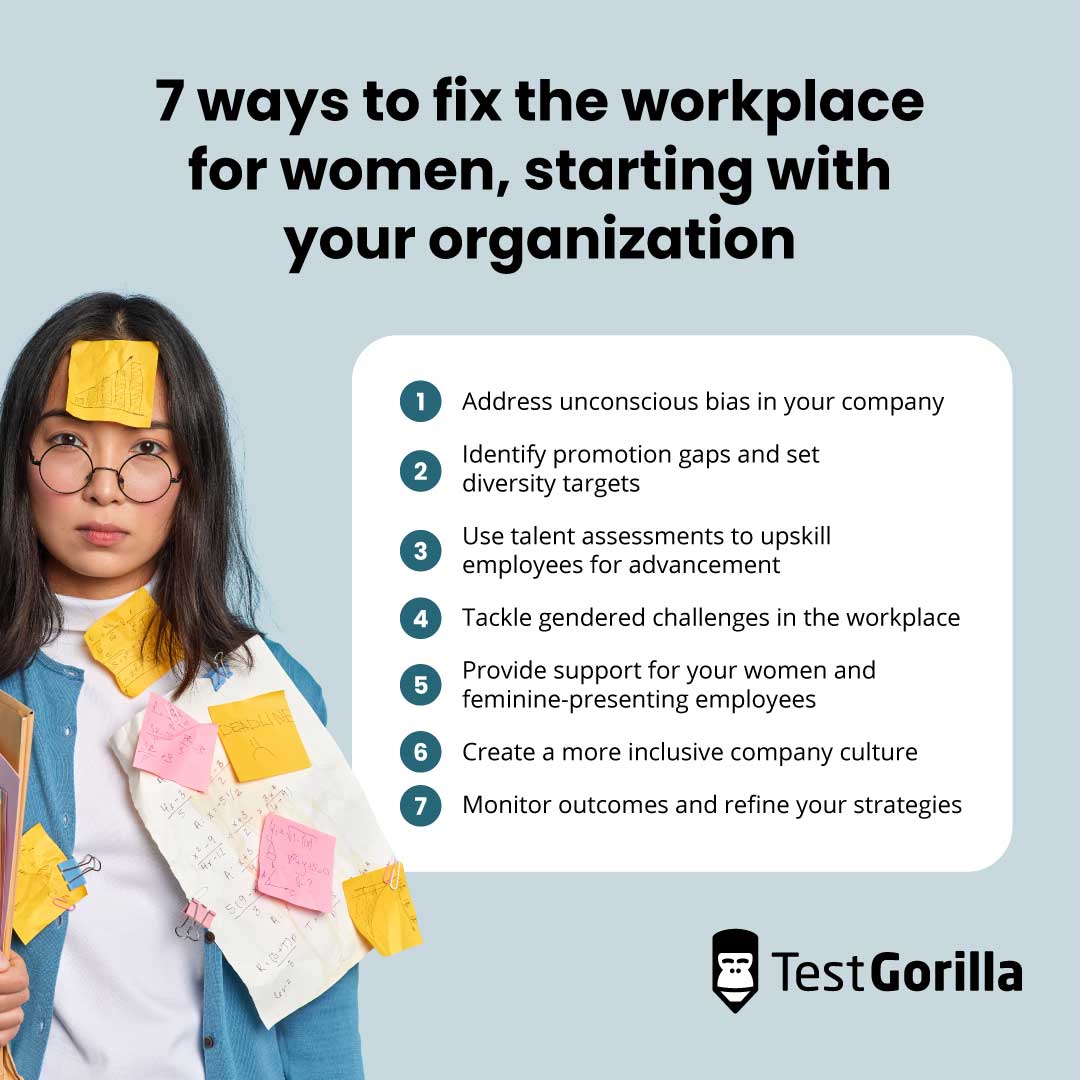Picture two professionals. The first is a man working his way up in his career. He rises through the ranks quickly and feels supported and celebrated by his peers. When he pitches an idea, people run with it, and he’s trusted to lead teams even though he doesn’t have management experience.
Now picture a woman who’s also trying to progress through the ranks. Although she’s led teams in the past, that experience seems to be invalidated or not taken into consideration. When she proposes an idea in a meeting, coworkers say she should “tone it down” and avoid being too bold.
Imagine that rather than two different professionals having these experiences, it’s the same person. Ashley T Brundage, founder of Empowering Differences, has the unique background of having tried to move up in the workforce as both a man, and then later as a trans woman. She’s living proof of the barriers women in the workplace face when trying to advance in their careers.
These challenges aren’t just anecdotal – women leaders are more likely than male leaders to experience microaggressions that call their competence and abilities into question and doubt their judgment, and they’re also more likely to be mistaken for someone more junior.[1]
What’s happening here is the “broken rung” phenomenon, which prevents women from accessing leadership roles and pushes them to leave their organizations to find better opportunities elsewhere.
We spoke with Ashley to explore why women are leaving their companies in large numbers, what impact the broken rung phenomenon has, and how you can help fix the broken rung at your organization.
Table of contents
Why women are leaving companies in droves
In the words of McKinsey senior partner Alexis Krivkovich, “Women leaders are voting with their feet.” In other words, women are leaving their current roles for more fulfilling jobs in what’s commonly referred to as the “great breakup.”[2]
They want more from their work, and they’re not afraid to leave a comfortable position to get it. Women leaders in particular are switching jobs at a shockingly high rate, and more frequently than men in leadership roles.[1]
Gendered workplace challenges
Why the mass exodus of women from management positions? The following challenges that women face in the workplace all play a role in pushing women to leave their current positions and explore alternatives:
Microaggressions, whether they’re rude comments or deliberate harmful actions, can drive women to leave their company for a more inclusive place of work. Fifty-seven percent of people who quit their job in 2021 left because they felt disrespected, so microaggressions can have a big impact on someone’s choice to stay at a company or head elsewhere.
Unconscious bias can creep into decisions about who to promote or whose ideas to run with, which can be a major source of frustration for women and feminine-presenting employees who don’t feel they’re getting the credit they deserve for their efforts and ideas.
A lack of Diversity, Equity, and Inclusion (DE&I) can make women feel unsupported, especially if their team is predominantly men. This is particularly true for women of color or with overlapping marginalized identities, as they may experience a sense of isolation or exclusion without the proper support.
No support for working parents can push women to search for a company that provides them with more flexibility or childcare options. This encompasses support for both working mothers and fathers, as more flexibility provided to fathers contributes to women being able to stay immersed in their careers.
Not enough sponsorship or mentoring opportunities can mean women don’t have the allies they need to support them in their career progression. Having strategic connections and sponsors can be highly valuable for women and feminine-presenting employees, who may often be the gender identity minority in a department or meeting.
Feeling overworked and underappreciated in general has a serious impact on employee engagement and, in turn, retention. If women feel their hard work is overlooked, they may not hesitate to look for a company where they feel more valued and appreciated.
Glass ceilings and glass cliffs limit women’s ability to advance in their careers or place them in a disadvantaged situation when they do. When you fail to promote your women and feminine-presenting employees, or only promote them in times of organizational crisis, you push them to look elsewhere for better, more promising opportunities.
Keep in mind: Many of these challenges are amplified for BIPOC (Black, Indigenous, and people of color) women and gender minority groups. For example, a recent study found that women, non-White participants, and Hispanic minorities experienced a higher frequency of microaggressions than White men counterparts. Additionally, almost a third of LGBTQ+ employees are victims of workplace microaggressions, a higher percentage than straight employees (this rate is even higher for LGBTQ+ women and trans employees).
The broken rung phenomenon: What is it, why does it happen, and what impact does it have?
The broken rung phenomenon refers to a “broken” step in the corporate ladder, limiting women from moving out of entry-level management roles and entering higher-level leadership positions. McKinsey’s “Women in the Workplace 2023” report underlines that progress is lagging for women at manager and director levels, creating a weak middle-management pipeline.[3]
This lack of representation is amplified for women of color, with the report stating that “at nearly every step in the pipeline, the representation of women of color falls relative to white women and men of the same race and ethnicity.”
More specifically, for every 100 men who are promoted from an entry-level position to manager, only 87 women are promoted, and only 82 women of color are promoted.[1] Additionally, while women in general represent about one in four C-suite leaders, women of color represent just one in 16.
We’ve heard of the “glass ceiling” that prevents women from reaching top levels of leadership, but the broken rung is becoming more prevalent, with men being far more likely than women to be promoted out of entry-level roles into their first managerial positions.
Why is this happening? Sheryl Sandberg and Rachel Thomas, founder and chief operating officer of LeanIn.Org respectively, believe that “there’s no good reason why so many more men than women are being tapped for promotions, only a bad one – bias.”[4]
This is why it’s so important to make a conscious effort at your organization to support women in their career development and carve out a space for them in upper-level management – more on this later. First, let’s take a look at the way the broken rung hurts both companies and individual employees.
Impact for companies
“No business in the world can succeed without hiring and promoting good employees, and when the numbers are this lopsided, many talented women are being overlooked,” says Sheryl Sandberg and Rachel Thomas in The Wall Street Journal.[4]
If the women on your team aren’t getting the chance to move up, you’re missing out on talent for leadership roles. More importantly, these women may not even stick around at all – 63% of people who left their job cited a lack of opportunities for advancement as a reason for quitting. Therefore, a broken rung in your organization leads to you losing talented individuals.[5]
Finally, it’s been shown that diverse teams are more creative and perform better financially.[6] The broken rung hurts gender diversity in organizations, so fewer women leaders is likely to negatively impact business performance.
Impact for individuals
For women and feminine-presenting employees, the impact of the broken rung is clear. Their ability to move up in their organization and in their career is limited, causing professional stagnation and career ruts.
As we mentioned above, this is especially true for women from underrepresented groups, with representation among women of color falling two-thirds as they move up the management ladder.[3] This becomes a vicious cycle – with fewer women in leadership positions, there are fewer senior women leaders who can mentor more junior employees, which perpetuates this broken rung.
Men suffer from this phenomenon as well, as primarily being surrounded by their peers at senior levels of management limits their exposure to diverse perspectives and gives them limited opportunity to learn from women and feminine-presenting peers with differing experiences and points of view.
7 ways to fix the broken rung for women, starting with your organization
While the broken rung has long impacted women’s ability to advance in their careers, the cycle can stop at your organization. Use these seven strategies to support your women and feminine-presenting employees and help them move up in your organization (instead of going elsewhere).
1. Address unconscious bias in your company
The first thing you need to do to fix the broken rung is work to mitigate harmful biases that hold women back. Sheryl Sandberg and Rachel Thomas recommend that organizations “require unconscious bias training for all evaluators” and “establish clear and specific criteria before employee reviews so it is less likely that reviewers will make decisions based on subjective feelings.”
Just note that while implicit bias training can be a valuable tool, it won’t work unless you take the right approach. This is why we recommend you:
Avoid a quick-fix approach by placing DE&I at the center of your organization’s values, rather than just running a one-off training session.
Use knowledge as a basis for behavioral change and be sure to first make your people aware of their biases.
Hire a more diverse workforce that can offer a range of perspectives and empathize with the women and feminine-presenting employees on your team.
2. Identify promotion gaps and set diversity targets
The next step is to analyze where your current organizational hierarchy is at and establish where it needs to get to. Calculate what percentage of leaders at each level are women, taking into account representation for overlapping marginalized identities as well.
Then, take action: Set diversity targets and make a point to put women and men up for promotions at similar rates. “Make it a rule to assemble a diverse slate of qualified candidates for every open position; no more choosing between a couple of men every time,” suggests Sheryl Sandberg and Rachel Thomas.
3. Use talent assessments to upskill employees for advancement
Once you’ve analyzed your current diversity status and set goals for making access to leadership positions more equitable, focus on upskilling your employees to prepare them for moving into a higher-level position.
This could look like measuring your employees’ managerial skills with a Leadership and people management test, so you can assess which leadership skills they need more training on. In general, these leadership skills tests help you uncover skills gaps your employees may not be comfortable bringing up to you or may not even be aware they have.
For example, you may find out that women who are poised to move up into a higher position need some support with developing conflict resolution skills, or you may realize you need to do more to empower your women to become better negotiators by providing targeted training and development.
4. Tackle gendered challenges in the workplace
You can’t expect things to get better for women in your organization without addressing some of the gendered issues discussed above. This includes microaggressions, a lack of support for working parents, and not enough mentorship.
A few approaches that tackle these challenges include to:
Take steps to combat workplace sexual harassment and minimize the prevalence of microaggressions.
Provide flexible working hours to the parents on your team, and if you have the resources, offer in-office childcare support.
Create a coaching and mentorship program aimed at both providing support for entry-level women and feminine-presenting employees, and having women play the role of mentor.
5. Provide support for your women and feminine-presenting employees
Ashley T Brundage outlines that her work at Empowering Differences has allowed her to establish three crucial empowering actions to address gender differences in the workplace and support diversity:
Access. Provide people with the resources and opportunities they need to reach an equitable outcome, such as leadership training for women in entry-level positions.
Inclusion. Cultivate a sense of belonging and connection to the other members of your organization (for example, by creating a diverse team where everyone feels welcome).
Educate. Help people to feel empowered to educate about their own gender identity while learning about other people’s identities, for instance, through encouraging open conversations.
However, Ashley underscores that “the resources companies can build are great, but they have to match the employee’s goal of where they’re trying to go.”
For example, maybe you have a woman manager who wants to move up into a more senior position, but they’ve realized they don’t enjoy people management. Instead of training them on skills that will help them manage a bigger team, support them in developing strategic decision-making skills.
6. Create a more inclusive company culture
There are a number of actions you can take that will make your organization’s culture more inclusive, and it starts from the top down. This is why it’s so important to build a diverse leadership team that makes all your employees feel that they belong and their voice is heard.
Ashley also recommends creating employee resources groups (ERGs) to help foster that sense of belonging among your people. Ashley suggests you “encourage employees to join a number of ERGs, even if they don’t align with one of their identities.” Ashley, for example, joined the Asian American ERG at her former company – even though she doesn’t hold this identity, it helped her connect to coworkers with experiences different from her own.
This approach to ERGs helps your people find allies and mentors who may be from different identity groups, fostering a sense of inclusion and empathy among employees that may not, on the surface, have much in common.
Ashley also emphasizes that “organizations should be purposeful about mandating that these groups work together.” This will prevent divisions from forming between ERGs and help ensure that people with all identities and backgrounds connect with and get to know each other.
7. Monitor outcomes and refine your strategies
Don’t forget to check and see if your strategies are working. For example, Ashley recommends that companies analyze the outcomes of their ERG efforts. Measure data like:
How many members each group has
How many events they planned
What the membership growth over a given time was
The community giveback total of the group
Most importantly, keep track of your progress in terms of minimizing promotion gaps and sticking to your diversity targets. Finally, don’t forget to ask employees how they feel about your efforts – even if things look good on paper, you might find out people still don’t feel fully supported in some areas and that you need to change your approach.
Fix the broken rung and help women climb your organization’s ladder
We can learn a lot from Ashley’s unique experience. The unconscious bias and intangible barriers women so often face are real and have lasting impacts, both on women’s careers and company performance.
While the broken rung is a greater societal issue, fixing the workplace for women starts at home: You can take these seven steps to ensure your workplace lifts women up and gives them equal opportunities to progress in their careers:
Address unconscious bias in your company
Identify promotion gaps and set diversity targets
Use talent assessments to upskill employees for advancement
Tackle gendered challenges in the workplace
Provide support for your women and feminine-presenting employees
Create a more inclusive company culture
Monitor outcomes and refine your strategy
Ultimately, creating a culture that builds women up starts with the people you hire. That’s why you should take a skills-based approach to hiring: This method helps you both eliminate unconscious bias from the recruitment process (which in turn helps you hire more women into your workforce) and ensures you’re selecting candidates who align with your company values.
The State of Skills-Based Hiring 2024
Read TestGorilla's annual report to discover why over 81% of companies are choosing to adopt skills-based hiring methods in 2024.
Sources:
“Women in the Workplace 2022.” (2022). McKinsey & Company. Retrieved October 24, 2023. https://www.mckinsey.com/~/media/mckinsey/featured%20insights/diversity%20and%20inclusion/women%20in%20the%20workplace%202022/women-in-the-workplace-2022.pdf
"Women in the workplace: Breaking up to break through." (2023). McKinsey & Company. Retrieved October 24, 2023. https://www.mckinsey.com/featured-insights/diversity-and-inclusion/women-in-the-workplace-breaking-up-to-break-through
“Women in the Workplace 2023.” (2023). McKinsey & Company. Retrieved October 24, 2023. https://sgff-media.s3.amazonaws.com/sgff_r1eHetbDYb/Women+in+the+Workplace+2023_+Designed+Report.pdf
“Sheryl Sandberg: The Gender Gap Isn’t Just Unfair, It’s Bad for Business.” (2019.) The Wall Street Journal. Retrieved October 24, 2023.https://www.wsj.com/articles/sheryl-sandberg-the-gender-gap-isnt-just-unfair-its-bad-for-business-11571112300
“Diversity wins: How inclusion matters.” (2020). McKinsey & Company. Retrieved October 24, 2023. https://www.mckinsey.com/~/media/mckinsey/featured%20insights/diversity%20and%20inclusion/%20%20%20%20diversity%20wins%20how%20inclusion%20matters/diversity-wins-how-inclusion-matters-vf.pdf
Related posts
Hire the best candidates with TestGorilla
Create pre-employment assessments in minutes to screen candidates, save time, and hire the best talent.
Latest posts
The best advice in pre-employment testing, in your inbox.
No spam. Unsubscribe at any time.

Hire the best. No bias. No stress.
Our screening tests identify the best candidates and make your hiring decisions faster, easier, and bias-free.
Free resources
This checklist covers key features you should look for when choosing a skills testing platform
This resource will help you develop an onboarding checklist for new hires.
How to assess your candidates' attention to detail.
Learn how to get human resources certified through HRCI or SHRM.
Learn how you can improve the level of talent at your company.
Learn how CapitalT reduced hiring bias with online skills assessments.
Learn how to make the resume process more efficient and more effective.
Improve your hiring strategy with these 7 critical recruitment metrics.
Learn how Sukhi decreased time spent reviewing resumes by 83%!
Hire more efficiently with these hacks that 99% of recruiters aren't using.
Make a business case for diversity and inclusion initiatives with this data.























